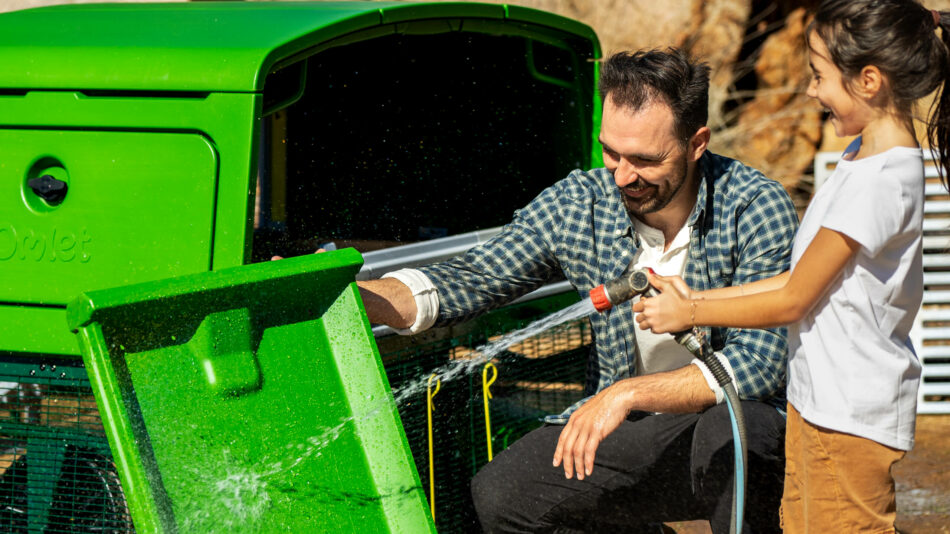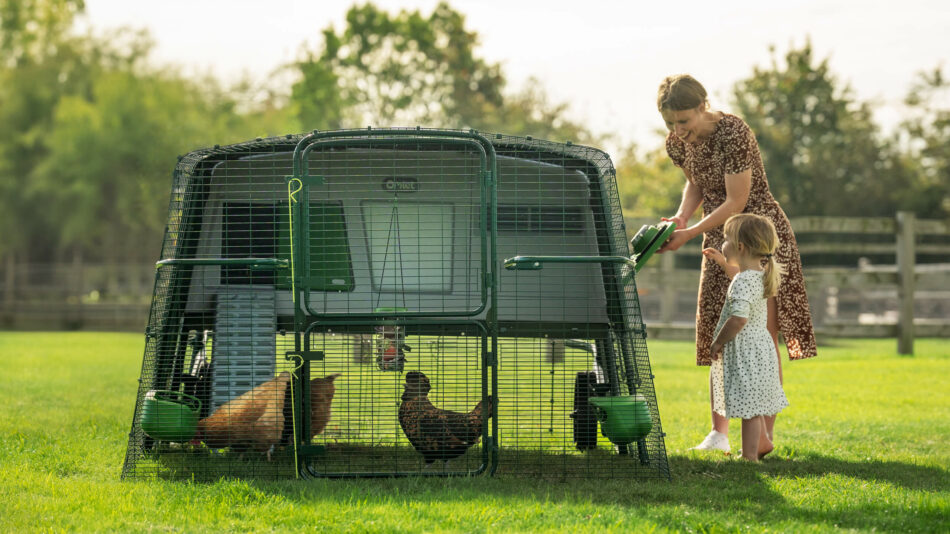Why a plastic chicken coop is better than a wooden one
There are several reasons why a plastic chicken coop is better than a wooden one. From performance to practicality, plastic excels above wood in every aspect. Discover why chicken keepers are ditching their traditional wooden coops in favor of low-maintenance plastic chicken coops.
Why is plastic better than wood?
Chicken coops are traditionally made from wood. Why is this? It’s because wood is readily available, and is relatively inexpensive as a material. DIYers and homesteading families can make a chicken coop from wood in anywhere from a few hours to a few days. But that’s about where the pros list ends. Reasons to avoid a wooden chicken coop are numerous, with the main drawbacks to wood being:
- Rot and mold or mildew
- Difficult to clean
- Costly and routine maintenance
- Vulnerability to predators
- Not waterproof
- Short lifespan
- Ideal environment for mites
- Difficult to move
- Flimsy
Plastic on the other hand, poses opposite benefits where wood finds itself falling short. Plastic chicken coops:
- Won’t rot or warp
- Are easy to clean
- Don’t require regular maintenance
- Provide superior protection against predators
- Are waterproof
- Have a lifespan of 20+ years
- Won’t harbor mites
- Can be moved easily
- Hold up in the elements
But among these, there are a few standout reasons that reveal a clear winner when comparing plastic vs wooden chicken coops.
Insulation
When you keep chickens, protecting them against the elements will be unavoidable — and insulation plays a vital role in keeping your chickens healthy and comfortable in all conditions. Insulation helps keep the inside of the coop at a comfortable temperature by trapping a pocket of air between the coop walls. In the wintertime, this means your hens’ body heat will be kept inside, while the cold outdoor air is kept out. And in the summer months, insulation protects against the outdoor heat, preventing the coop from becoming a hot box.
Wooden chicken coops can’t be insulated properly, unless they’re built in a fashion similar to modern homes. But wooden coops readily available for purchase will not be insulated, and carry a high likelihood of developing dangerous drafts. Omlet’s chicken coops are insulated and draft-free, while providing ample ventilation to promote healthy respiratory function within your flock.
Predator protection
Aside from the elements, another challenge flock raisers face are chicken predators. Even backyard flocks aren’t immune to threats. Wooden chicken coops warp and weaken in the elements, making them susceptible to predator invasions. And, the latches on wooden chicken coop doors are easy for predators like raccoons to riddle out.
Omlet’s plastic chicken coops are strong enough to withstand predators as large as bears and as lithe as weasels. Our raccoon-proof chicken coop door handles and tight run wire spacing keeps predatory paws at bay, while the added security of an automatic chicken coop door makes it nearly impossible for opponents to open. And, the anti-tunnel skirting of the attached run will foil foxes and deter dogs from digging into your hens’ home.
Cost of maintaining
If the idea of re-roofing, sealing, and painting a chicken coop every year sounds appealing to you, then a wooden coop will gladly demand your time and resources. But if you’re like the majority of other chicken keepers, you’ll find the prospect of this necessary wooden coop upkeep a dreaded task. While acquiring a wooden coop requires less initial investment than a plastic coop, the ongoing expenses of maintaining it each year make it a costly endeavor.
Plastic chicken coops don’t require regular maintenance, and will never need re-roofing, painting, or sealing. They’re waterproof, weatherproof, and maintain their appearance and performance throughout the years.
Ease of cleaning
Cleaning a wooden chicken coop is a chore, and an unpleasant one at that. But thanks to plastic, chicken coops can be cleaned in a fraction of the time and elbow grease. No more scraping roosting bars and coop floors or dusting surfaces with coop refreshers or mite repellents — with a plastic coop, you can keep your hens’ home hygienic and healthy with minimal effort.
Cleaning an Omlet chicken coop is fun, efficient, and yields a sparkling clean coop for your flock in just minutes. Simply slide out the droppings tray, dump the soiled bedding, and use a pressure washer or garden hose to spray any debris away on the inside of the coop. Dry with a clean towel, refill the tray with bedding, and reassemble the coop. And just like that, your chicken coop is clean.
Omlet and your flock
We aren’t just biased in our belief in the super powers of plastic — thousands of real-life testimonials all agree that Eglu Chicken Coops are the future of chicken keeping. And with smart accessories like the Autodoor and Coop Light, you can future-proof your flock and revolutionize your routine. So, if you’re ready to break up with your wooden coop and embark on the path of plastic — we’re here for it.
This entry was posted in Chickens


